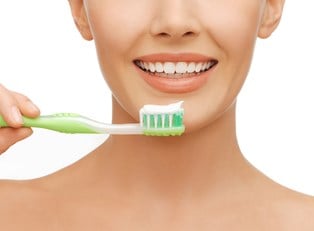Flossing correctly is a crucial step in any oral hygiene regimen. When you floss, you are helping to ensure the long life of your teeth and gums through the removal of plaque. By including flossing in your oral healthcare routine, you will be guarding against halitosis, tooth decay, tooth loss, and cavities. In order to reap the greatest benefits, however, you must floss correctly.
Picking the Right Type of Dental Floss
There are many types of dental floss to choose from, and the type of floss that is right for you can depend entirely upon your personal preferences. If you choose to use nylon floss, you will be able to pick from a wide variety of flavors. This type also comes in both waxed and unwaxed varieties. While the waxed varieties may slide more easily between teeth, tape floss may be better for you if you have wide gaps between your teeth. If the spaces between your teeth are very tight, you may wish to go with the more expensive single filament floss. This type of floss shreds less easily than nylon and slides easily between most teeth.
Choosing When to Floss Your Teeth
In order to enhance your debris removal, you will need to floss at least once a day. The amount of time recommended by the American Dental Association for flossing is two to three minutes daily. Most individuals choose to floss at night, and this will allow you to remove the excess stray food that has been trapped between your teeth during the day. The American Dental Association states that it does not matter whether you floss before or after you have brushed your teeth.
Using the Proper Techniques
To begin the flossing procedure, you will need at least 18 inches of floss. Wrap the majority of the length of the floss around either your index fingers or your middle fingers. Approximately four inches of the floss should be exposed and held tightly between your fingers and your thumbs. Gently slide the floss up and down between your teeth, making sure that you go beneath the gumline by curving the floss around each tooth's base. Repeat the gentle up and down sliding motion as you remove the floss.
Avoiding Improper Flossing Techniques
Always make sure that the floss section you are using for each new tooth is clean. Be careful not to force the floss or snap the floss against your gums. This might result in damaging healthy gum tissue. It is essential that you adequately clean each of your teeth, including your back teeth. Many people develop tooth decay and other dental problems in their back teeth because they fail to provide adequate oral hygiene for those teeth.
Your smile is the best first impression that you can make. By flossing daily and following these guidelines, you can make sure that yours is a healthy and beautiful smile that you'll be proud to show off.



